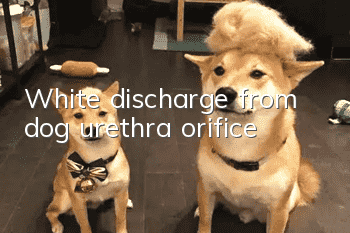Symptoms and prevention of uremia in dogs

Not only people can get uremia, but dogs can too. Uremia is caused by kidney failure. The accumulation of toxic substances in the body cannot be decomposed, causing huge harm to the body. Diseases like this are often accompanied by some complications, so dogs What are the symptoms if you suffer from uremia? How should dogs suffering from uremia be treated?
Maltese Dog
Symptoms of canine uremia:
1. Due to the damage to various tissues and organs of dogs, their clinical symptoms are also complex and diverse. Sick dogs are extremely depressed, unconscious, sensory disorders, lethargy: loss of appetite or exhaustion, vomiting, gastrointestinal inflammation, mucosal ulcers, diarrhea, bloody stools, intestinal paralysis: elevated blood pressure, cardiac insufficiency, pulmonary edema, congestion, respiratory Shallow and frequent.
2. Due to metabolic disorders, affected dogs may present with dehydration, low sodium, calcium, and high potassium, phosphorus, and magnesiumemia, significantly increased non-protein nitrogen content in the blood, acidosis, and hyperlipidemia. Impaired glucose tolerance and vitamin deficiency. Hyperphosphatemia further causes abnormal calcium metabolism and vitamin D deficiency. Suffering dogs are often accompanied by osteomalacia and osteodystrophy, and may also develop secondary hyperparathyroidism. Due to the low immune function of dogs, they are prone to secondary infections.
3. Blood tests show that urea nitrogen is higher than 40 mg/100 ml, creatinine is higher than 4 mg/100 ml, blood sodium, calcium, and carbonate are reduced. Blood potassium and phosphorus are increased.
4. Urine test. The kidneys have the function of concentrating and diluting urine. In prerenal renal failure, the urine specific gravity is 1.025: in renal renal failure, it is 1.008--1.012, indicating that the renal concentration and dilution functions are reduced; in postrenal renal failure, the urine specific gravity changes indefinitely. Oliguria and anuria are symptoms of critical illness (under normal circumstances, canine urine levels are 25 to 40 mg/kg of body weight per day).
Treatment of canine uremia:
1. General treatment. Administer sodium bicarbonate according to the degree of acidosis (detection of plasma carbon dioxide binding capacity), and select calcium-free infusions to adjust hyperkalemia. Supplement a large amount of amino acids, high-energy, vitamin preparations, etc. to improve hyperzotaemia. For dogs with prerenal uremia, administer furosemide 2 to 4 mg/kg body weight, once every 8 to 12 hours. Or diuretic acid 1 to 2 mg/kg body weight, administered in 2 divided doses. When neurological symptoms occur, administer chlorpromazine 10 to 20 mg/kg body weight or phenobarbital 2 to 5 mg/kg body weight orally three times a day.
2. Peritoneal dialysis. When the blood urea nitrogen is 100 mg/100 ml, the serum creatinine is 10 mg/100 ml, and the serum potassium is 6 mmol/l, peritoneal dialysis can be performed. Dialysate is a calcium-free fluid. Intermittent peritoneal perfusion is relatively simple. For dogs with severe water retention, hypertonic sugar can be usedPerfusate. If the symptoms relapse after repeated perfusion, it indicates that the kidneys have completely lost their function. Prognosis is poor.
3. Intermittent peritoneal perfusion method: The abdominal wall is clipped and disinfected, punctured with an ascites trocar, and a multi-hole cannula is inserted. Remove the cannula and leave the cannula in place. After the perfusate is warmed, 50 to 150 ml/kg is injected each time. After staying for 40 minutes, the fluid is drained naturally and repeated 2 to 3 times. The perfusate is usually sodium lactate compound preparation.
4. When pulmonary edema is severe, use a compound preparation of glucose and sodium lactate with high osmotic pressure. Since the perfusate does not contain potassium chloride, for dogs with hypokalemia, 4 ml of potassium chloride (4 mmol/L) should be added to each liter of perfusate.
- What to do if your dog has double rows of teeth
- Things to note when feeding Teddy dogs
- Signs your dog loves you
- Common dog diseases in winter
- What are the symptoms of rabies in dogs?
- What are the symptoms of false pregnancy in dogs?
- Letting your dog walk upright is very harmful. Don’t let your ignorant interest ruin your dog’s life!
- What should I do if my dog has fleas? How to get rid of fleas on your dog?
- Why should a dog’s tail be docked? What are the reasons for docking a dog’s tail?
- What causes tear stains in dogs and how to improve them



